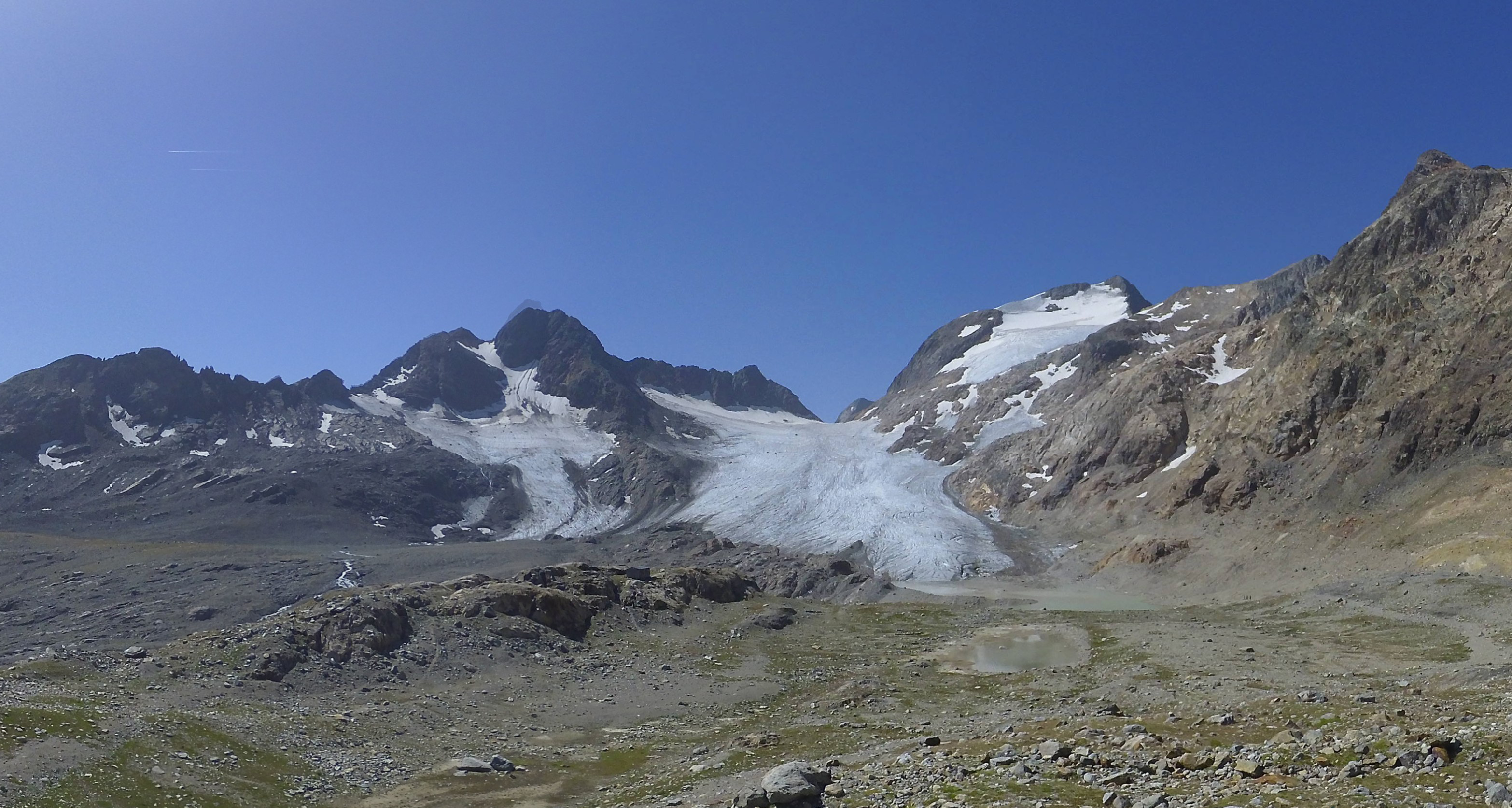Alpine glaciers will lose at least a third of their volume by 2050, whatever happens
Article originally published by UNIL
Even if greenhouse gas emissions were to cease altogether, the volume of ice in the European Alps would fall by 34% by 2050. If the trend observed over the last 20 years continues at the same rate, however, almost half the volume of ice will be lost as has been demonstrated by scientists from UNIL in a new international study.
By 2050, i.e. in 26 years’ time, we will have lost at least 34% of the volume of ice in the European Alps, even if global warming were to stop completely and immediately. This is the prediction of a new computer model developed by scientists from the Faculty of Geosciences and Environment at the University of Lausanne (UNIL), in collaboration with the University of Grenoble, ETHZ and the University of Zurich. In this scenario, developed using machine-learning algorithms and climate data, warming is stopped in 2022, but glaciers continue to suffer losses due to inertia in the climate system. This most optimistic of predictions is far from a realistic future scenario, however, as greenhouse gas emissions continue to rise worldwide.
In reality, more than half the volume of ice will disappear
Another more realistic projection from the study shows that, without drastic changes or measures, if the melting trend of the last 20 years continues, almost half (46%) of the Alps’ ice volume will actually have disappeared by 2050. This figure could even rise to 65%, if we extrapolate the data from the last ten years alone.
2050 : the near future
Unlike traditional models, which project estimates for the end of the century, the new study, published in Geophysical Research Letters, considers the shorter term, making it easier to see the relevance in our own lifetimes and thus encouraging action. How old will our children be in 2050 ? Will there still be snow in 2038, when Switzerland may host the Olympic Games ? These estimates are all the more important as the disappearance of kilometers of ice will have marked consequences for the population, infrastructure and water reserves. "The data used to build the scenarios stop in 2022, a year that was followed by an exceptionally hot summer. It is therefore likely that the situation will be even worse than the one we present", states Samuel Cook, researcher at UNIL and first author of the study.
Artificial intelligence boosts models
The simulations were carried out using artificial-intelligence algorithms. The scientists used deep-learning methods to train their model to understand physical concepts, and fed it real climate and glaciological data. "Machine learning is revolutionizing the integration of complex data into our models. This essential step, previously notoriously complicated and computationally expensive, is now becoming more accurate and efficient", explains Guillaume Jouvet, prof. at the FGSE and co-author of the study.
Reference :
The modelling was performed with the IGM model developed in UNIL ICEgroup.
S. J. Cook, G. Jouvet, R. Millan, A. Rabatel, H. Zekollari, I. Dussaillant, Committed Ice Loss in the European Alps Until 2050 Using a Deep-Learning-Aided 3D Ice-Flow Model With Data Assimilation, Geophysical Research Letters
Contact :
 The federation
The federation Intranet
Intranet








